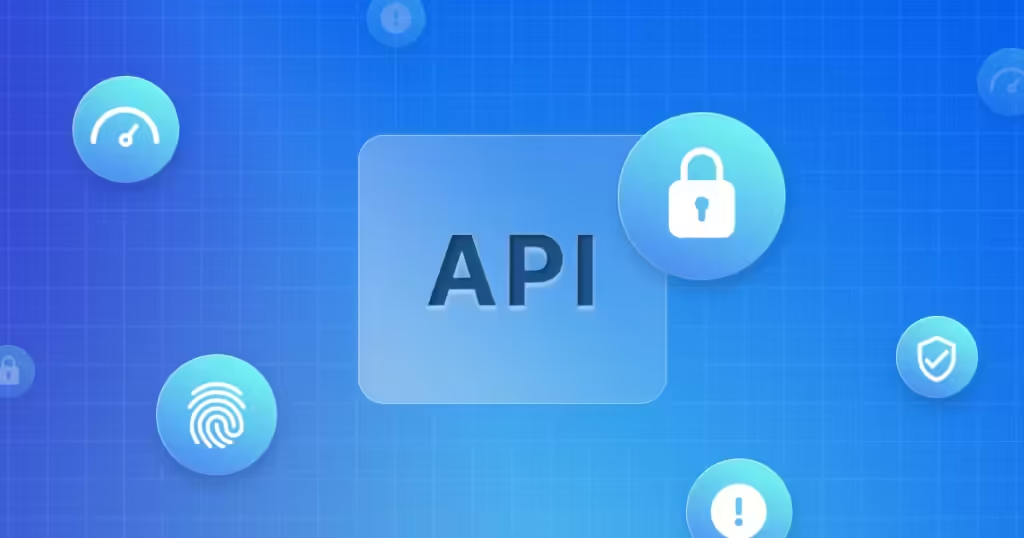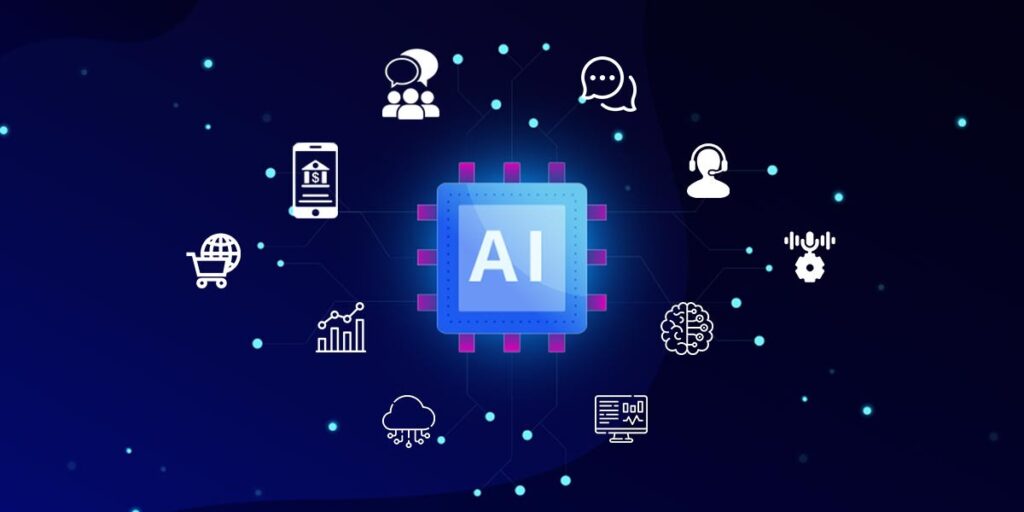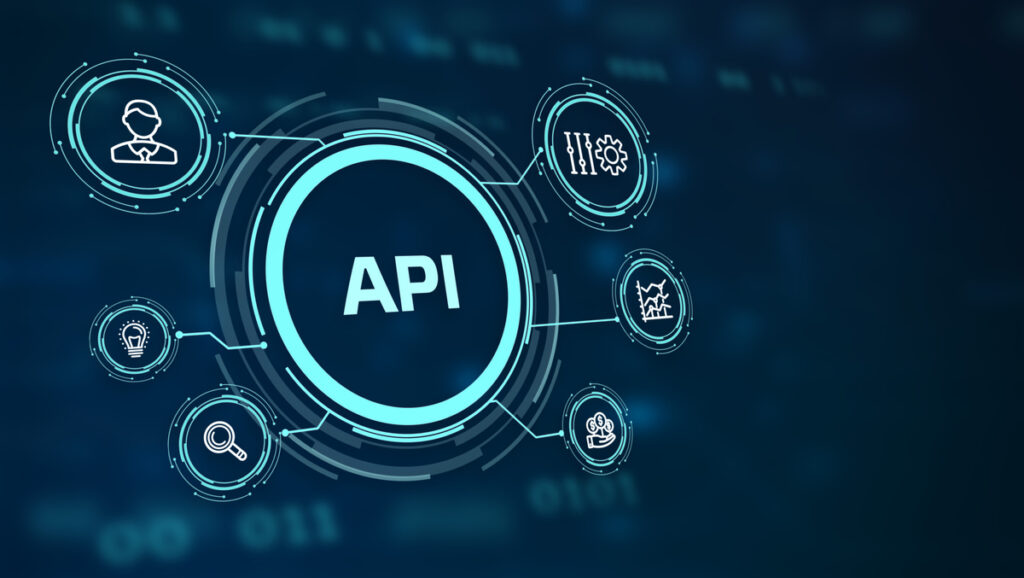Table of Contents
AI APIs have become indispensable tools in the world of development. They offer pre-trained models and algorithms, simplifying the process of building complex AI applications. AI APIs (Application Programming Interface) acts as a bridge between an AI model and the applications that interact with it. It provides a set of predefined functions and protocols that allow developers to access and utilize the AI model’s capabilities without needing to delve into the intricacies of its underlying algorithm

The primary goal of AI APIs (Application Programming Interfaces) is to provide a standardized and accessible way for different software components or applications to interact with each other. By defining a clear set of rules and protocols, AI APIs allow developers to build more complex and interconnected systems, promote interoperability, and facilitate the exchange of data and functionality between different software components.
Key Components of AI APIs
· Endpoint: The URL or address where requests to the AI model are sent.
· Authentication: The mechanism used to verify the identity of the user or application making the request.
· Request Format: The structure of the data that is sent to the AI model, including input parameters and their data types.
· Response Format: The structure of the data that is returned by the AI model, including output results and any relevant metadata.
· Documentation: Detailed instructions on how to use the API, including examples and best practices.
The best APIs for AI
Google Cloud AI Products offer a comprehensive suite of tools and services designed to help developers and businesses harness the power of artificial intelligence. From natural language processing to computer vision and machine learning, Google Cloud provides cutting-edge solutions that enable organizations to build intelligent applications and gain valuable insights from their data. With a focus on scalability, reliability, and ease of use, Google Cloud AI Products empower businesses to innovate and drive growth.
OpenAI APIs is a powerful tool that provides access to state-of-the-art AI models, allowing developers to easily incorporate advanced capabilities into their applications. It offers a wide range of features, including natural language processing, text generation, translation, and more. By leveraging OpenAI API, developers can create innovative and intelligent solutions that can understand and respond to human language.
Hugging Face APIs provide a user-friendly interface to access and utilize a vast library of pre-trained machine learning models, particularly in the fields of natural language processing (NLP) and computer vision. These APIs simplify the process of building and deploying AI applications by offering a wide range of models, from text generation and sentiment analysis to image classification and object detection. Hugging Face also provides tools and resources for training and fine-tuning custom models, making it a valuable platform for both beginners and experienced AI developers.
Stream’s Auto Moderation is a powerful AI-driven tool designed to protect online communities from harmful content. It leverages advanced machine learning algorithms to automatically detect and prevent the spread of inappropriate or offensive material, such as hate speech, harassment, and spam. This helps to create safer and more welcoming online environments for users, while also reducing the workload on human moderators.
Imagga is a leading provider of computer vision and artificial intelligence solutions. They offer a cloud-based platform that enables developers and businesses to leverage powerful image recognition and analysis capabilities. Imagga’s technology can be used for various applications, including image tagging, facial recognition, object detection, and content moderation. With their API-driven approach, Imagga makes it easy to integrate computer vision into a wide range of products and services.
Types of AI APIs

Pre-trained Models are AI models that have already been trained on massive datasets, learning to perform specific tasks like image classification, natural language understanding, or speech recognition. These models serve as a solid foundation for developers, saving them time and resources by providing a starting point for their own projects. By fine-tuning pre-trained models with task-specific data, developers can create highly accurate and efficient AI applications.
Custom Models in AI development refer to models trained on specific datasets to address unique tasks or problems. Unlike pre-trained models, which are trained on general datasets, custom models are tailored to the specific needs of an organization or application. This customization process involves gathering relevant data, selecting appropriate algorithms, and fine-tuning the model to achieve desired performance. Custom models offer greater flexibility and accuracy for tasks that require specialized knowledge or data.
Hybrid Models in AI combine the strengths of pre-trained models and custom training to create more tailored solutions. These models leverage the knowledge and patterns learned from large datasets while also incorporating specific domain expertise or data. By combining these approaches, hybrid models can achieve higher accuracy and performance compared to either pre-trained or custom models alone. They are particularly useful in scenarios where pre-trained models may not be directly applicable or where domain-specific knowledge is crucial.
Advantages of AI APIs for Modern Businesses
Accelerated Development with AI APIs refers to the ability to rapidly build and deploy AI applications. By leveraging pre-trained models and algorithms, developers can avoid the time-consuming process of training models from scratch. This significantly speeds up the development cycle, allowing businesses to quickly bring AI-powered solutions to market and gain a competitive advantage. AI APIs also provide a standardized interface, making it easier to integrate AI capabilities into existing applications and systems.
Competitive Advantage refers to a unique feature or characteristic that sets a company apart from its competitors and allows it to attract customers, increase market share, and achieve higher profitability. This advantage can be derived from various factors such as superior product quality, innovative technology, efficient operations, strong brand reputation, or a unique business model. By identifying and leveraging competitive advantages, businesses can create sustainable growth and outperform their rivals in the marketplace.
Scalability in AI refers to the ability of AI systems to handle increasing workloads or data volumes without compromising performance. A scalable AI system can adapt to changing demands, whether it’s handling a surge in user traffic or processing larger datasets. This is crucial for businesses that need to handle fluctuating workloads or anticipate future growth. Scalability can be achieved through various techniques, such as distributed computing, cloud-based infrastructure, and efficient algorithms.
Cost-Effective refers to something that is efficient and economical, providing value for the money spent. In the context of AI APIs, being cost-effective means that they offer a balance between the benefits they provide (like accelerated development, improved accuracy, and increased efficiency) and the costs associated with using them (such as subscription fees or usage charges). This makes AI APIs a viable option for businesses of all sizes, as they can access advanced AI capabilities without breaking the bank.
Customer satisfaction is a measure of how happy customers are with a product or service. It is a crucial metric for businesses as it directly impacts customer loyalty, repeat business, and overall success. Satisfied customers are more likely to recommend a company to others, leading to increased market share and revenue.
Common Use Cases
Natural Language Processing (NLP) is a field of artificial intelligence that focuses on the interaction between computers and human(natural) languages. It involves teaching computers to understand, interpret, and generate human language in a way that is both meaningful and useful. NLP techniques are used in a wide range of applications, including machine translation, sentiment analysis, text summarization, and chatbots.
Computer Vision is a field of artificial intelligence that focuses on enabling computers to understand and interpret visual information from the real world. It involves developing algorithms and techniques that allow computers to process, analyze, and understand images and videos. This includes tasks such as object detection, image classification, image segmentation, and facial recognition.
Healthcare is the maintenance and improvement of physical and mental health, often through the prevention, diagnosis, treatment, and management of disease. It encompasses a wide range of services, including medical care, nursing, dentistry, pharmacy, and allied health professions. Healthcare systems vary widely across different countries and regions, with varying levels of public and private funding, accessibility, and quality of care.
Customer service is the practice of providing assistance and support to customers before, during, and after they purchase a product or service. It
involves interacting with customers to address their inquiries, resolve issues, and ensure their overall satisfaction. Effective customer service is essential for building customer loyalty
Examples of APIs

Social Media APIs are essential tools that enable developers to create applications that interact with various social media platforms. These APIs provide a standardized way to access and manipulate data, such as user profiles, posts, comments, and messages. By leveraging social media APIs, developers can build applications that integrate with popular platforms like Facebook, Twitter, Instagram, and LinkedIn, allowing users to share content, connect with friends, and engage in social interactions directly within their applications.
Third-party login systems allow users to sign in to applications using their existing accounts from popular platforms like Google, Facebook, or Twitter. These systems simplify the registration process for users and provide convenient access to their social profiles. By leveraging third-party logins, businesses can streamline their user acquisition and engagement efforts while also gaining valuable insights into their users’ demographics and preferences.
E-commerce transaction APIs are a vital component of online marketplaces and payment systems. These APIs provide a standardized interface for developers to integrate payment processing, order management, and other e-commerce functionalities into their applications. They enable businesses to accept payments securely, manage orders efficiently, and provide a seamless shopping experience for customers.
API Security Concerns
Security concerns related to using APIs in AI primarily revolve around data privacy, unauthorized access, and potential vulnerabilities in the API itself. Sensitive data, such as personal information or proprietary business data, can be compromised if APIs are not properly secured. Additionally, unauthorized access to APIs can lead to malicious activities like data theft, manipulation, or denial-of-service attacks. Furthermore, vulnerabilities in the API’s implementation can expose it to exploitation, potentially allowing attackers to gain unauthorized access or control over the underlying AI system.
Conclusion
AI APIs have emerged as essential tools for developers and businesses, providing a powerful way to leverage the capabilities of AI without the need for extensive expertise. By understanding the key components, types, benefits, and common use cases of AI APIs, you can effectively harness their potential to build innovative and intelligent applications. As AI technology continues to advance, we can expect AI APIs to play an increasingly important role in shaping the future of various industries.